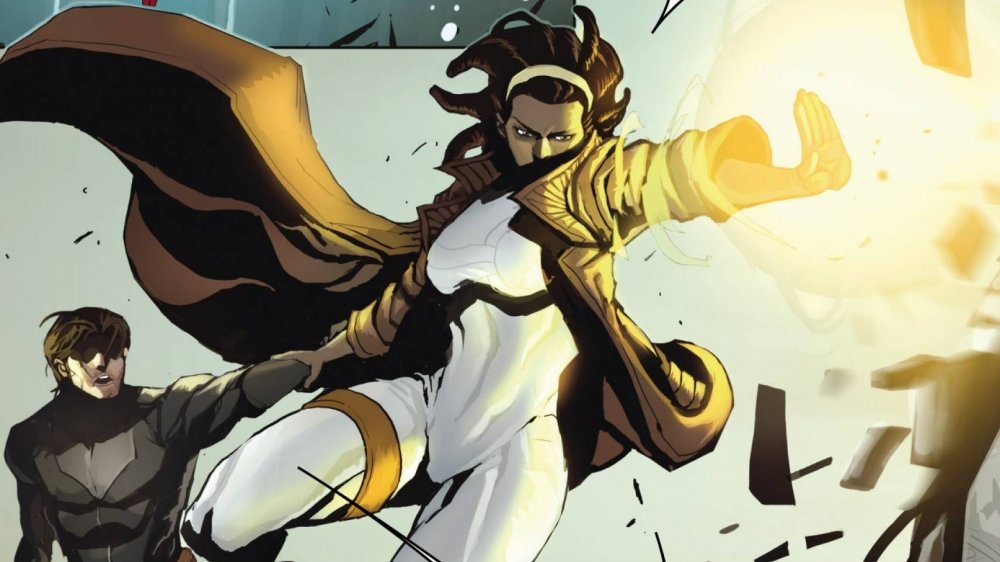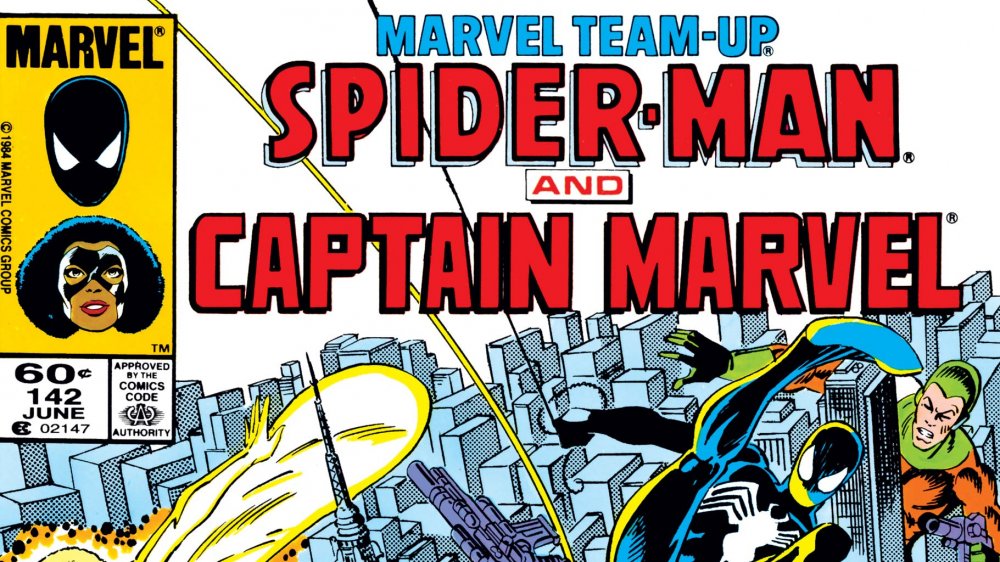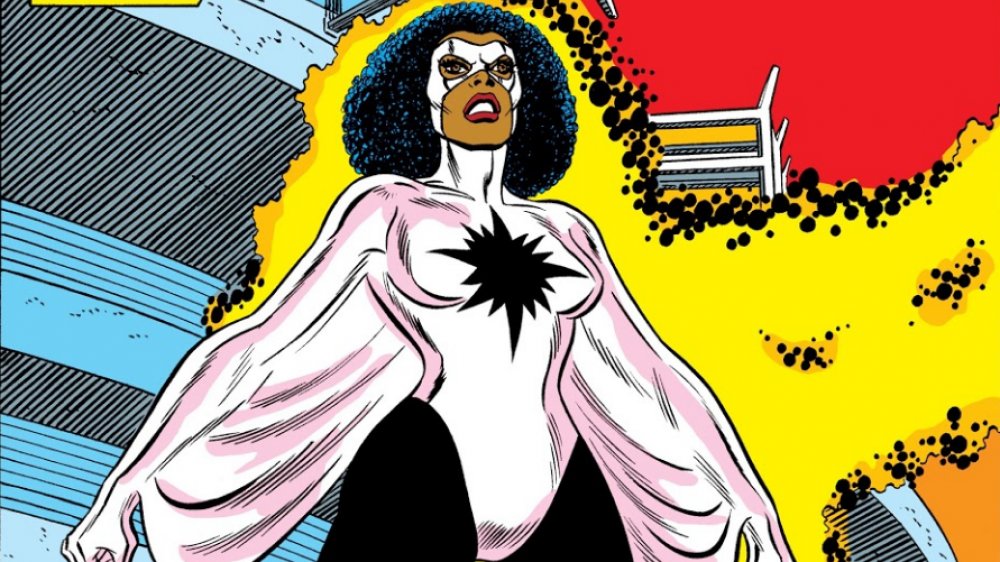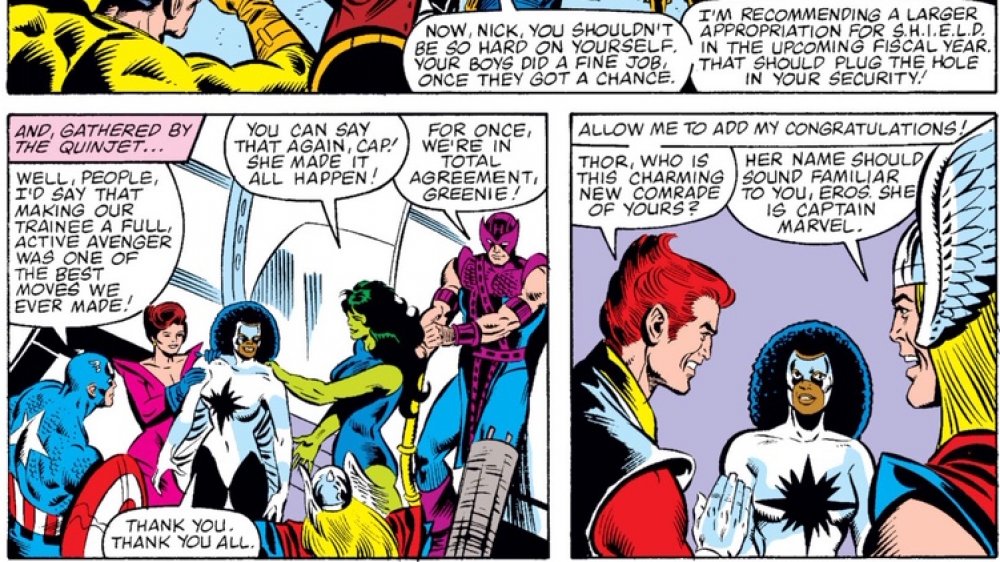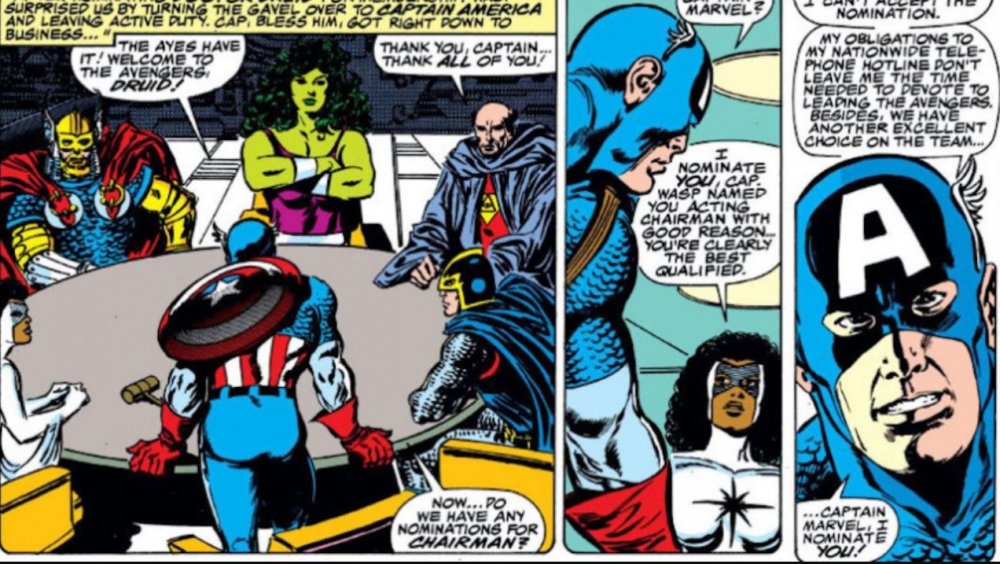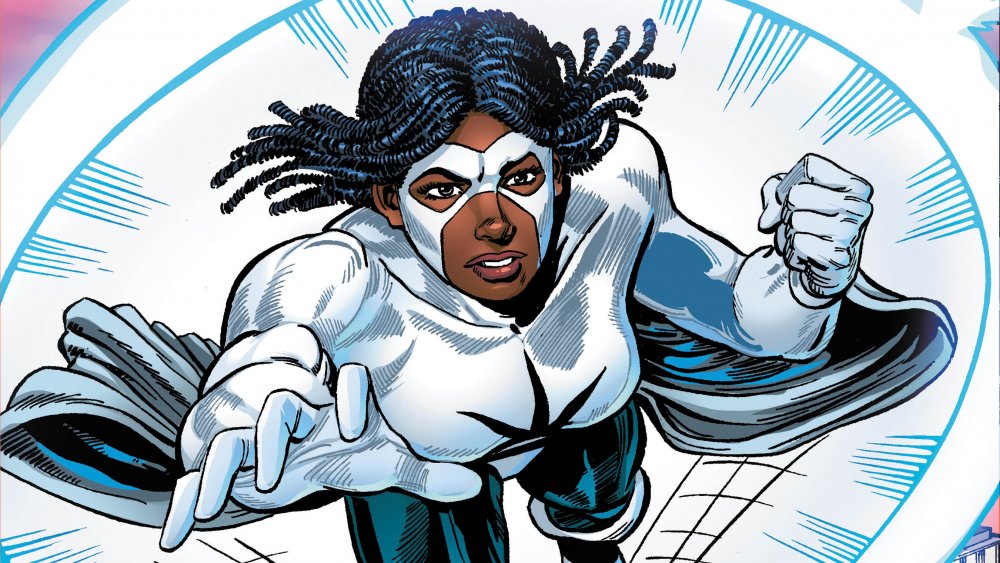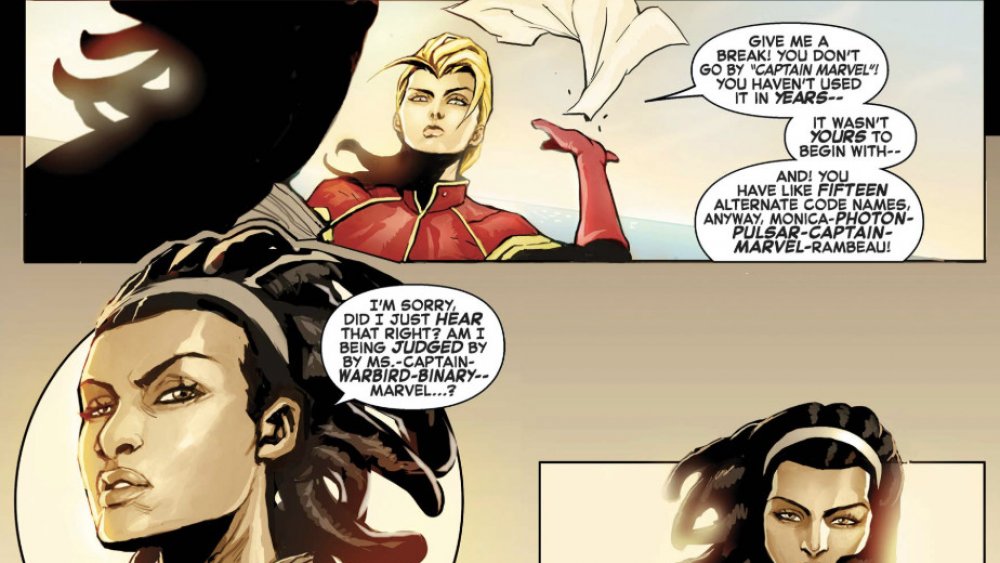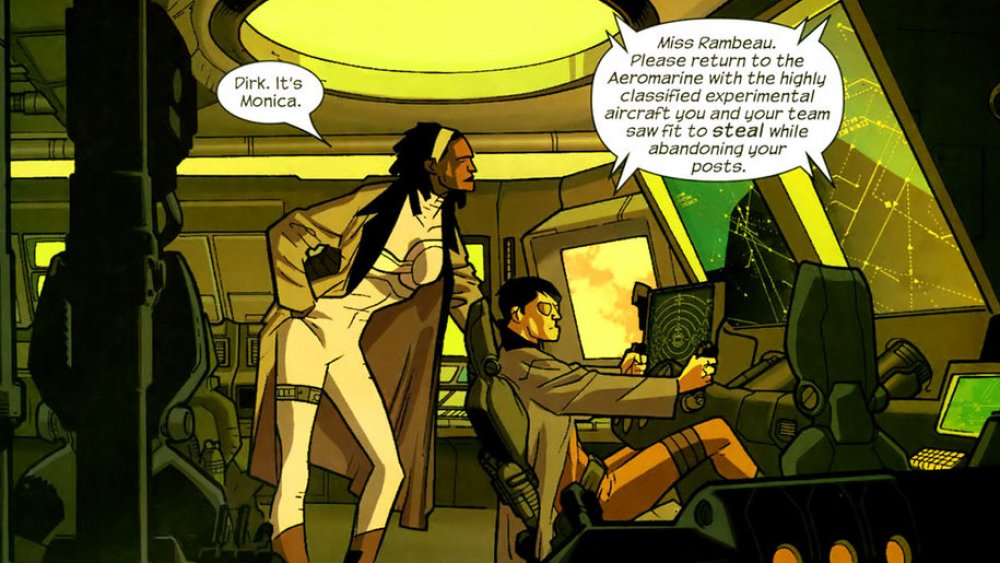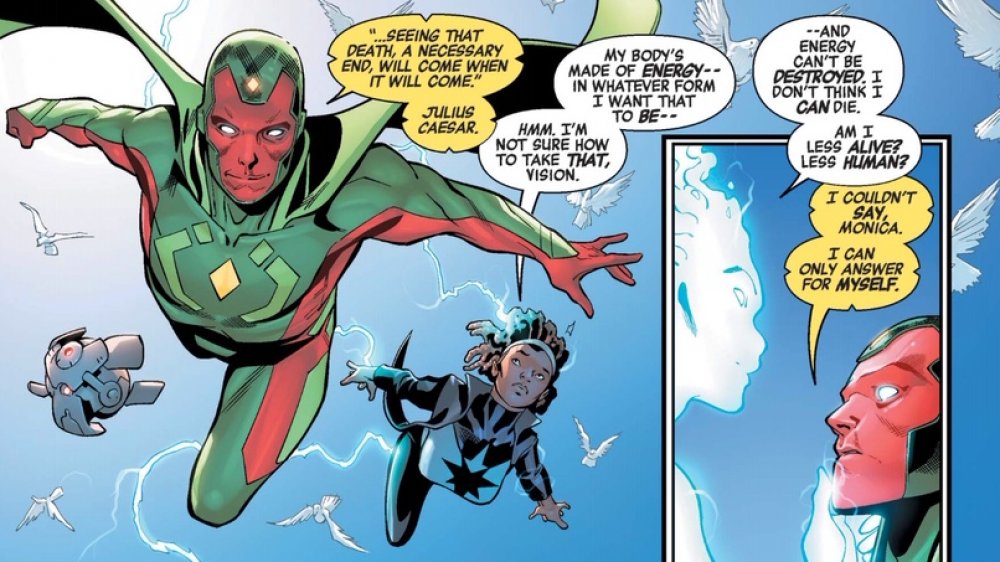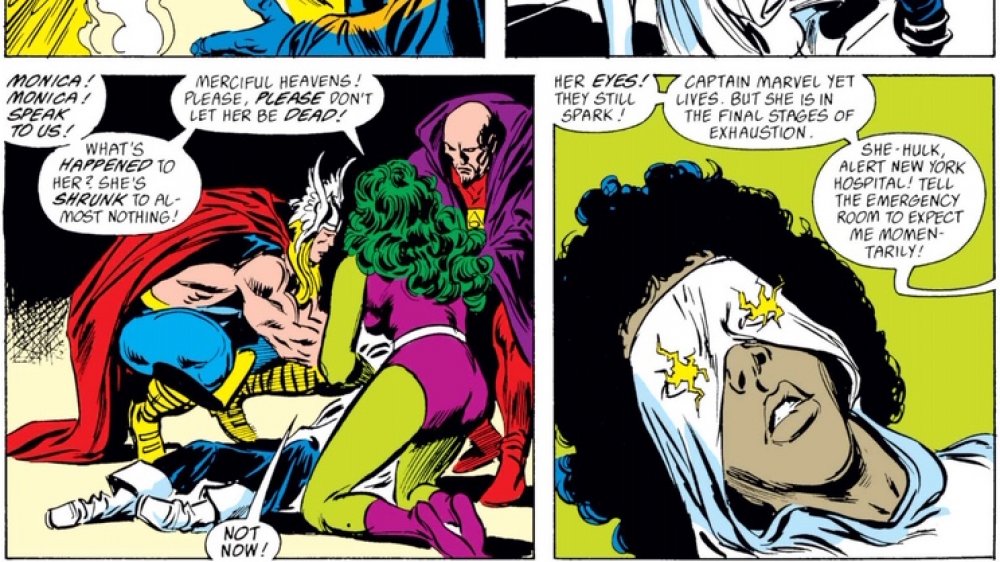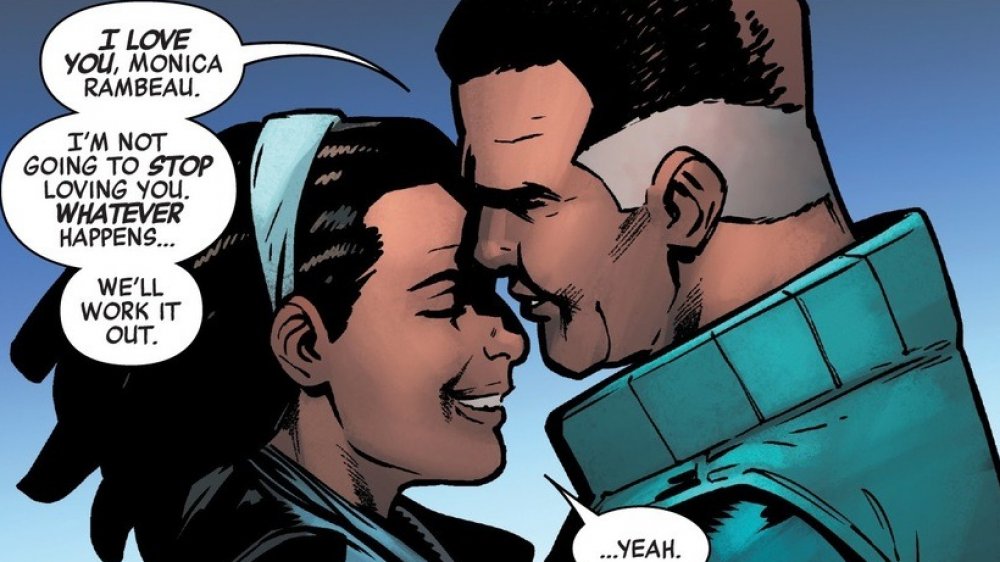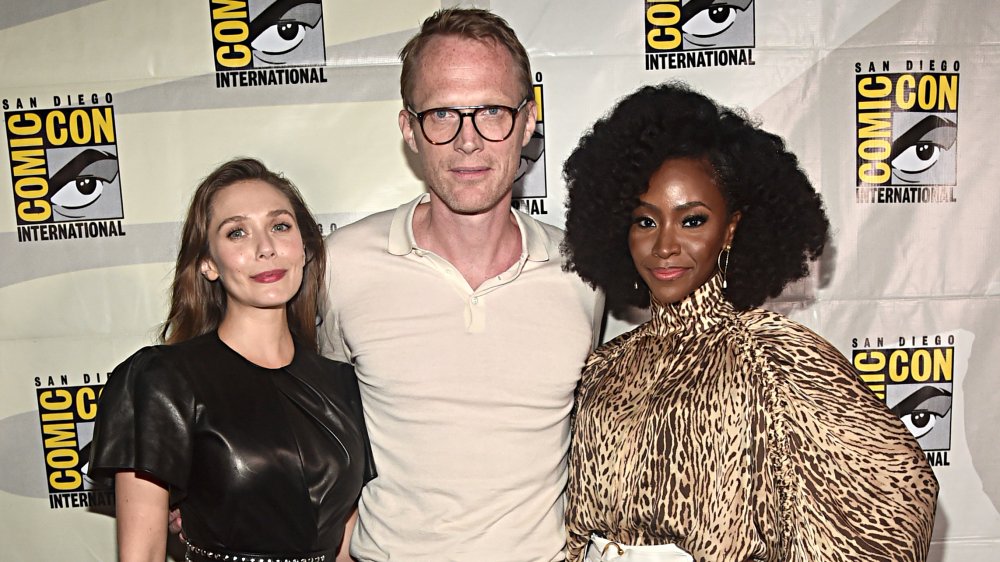The Untold Truth Of Monica Rambeau
Although 2019's Captain Marvel was another slam dunk for the MCU's pocketbook, it wasn't without its criticisms. One of the film's biggest controversies was its depiction of Monica Rambeau, played in the film by Akira and Azari Akbar. To the Marvel newbie, the fact that Monica is portrayed as a child in awe of Carol Danvers and her impressive powers may not seem to be a big deal. However, to those who actually recognize the character's rich, significant history in comics, it can be perceived as a slap in the face.
The truth is, Monica Rambeau, created by Roger Stern and John Romita Jr. in 1982, is a spectacular heroine in her own right. Few understand just how monumental her contributions to the Marvel universe truly are, nor how massive her character potential remains, decades after her debut. As a character, her impressive energy-manipulating powers make her an Alpha-Level threat, while her strong leadership and sarcastic wit make her a fan-favorite This is the untold truth of Marvel's all-too-often forgotten Avenger, Monica Rambeau.
She debuted in a Spider-Man comic
Monica made her debut in 1982's Amazing Spider-Man Annual #16. In this issue, fans are introduced to the spunky future Avenger as Lieutenant Rambeau, an officer climbing the ranks of the New Orleans Harbor Patrol. While on a mission, Rambeau takes a direct shot of extra-dimensional energy from a criminal scientist's mysterious machine. As a result, she is granted incredible power over energy: Monica is able to generate it, manipulate it, absorb it, and even transform her body into pure energy, which enables her to travel at astonishing speed through the vacuum of space.
After this incident, Monica encounters some thieves who try to steal her purse. While chasing them down, she actually bumps into Spider-Man, who, along with Iron Man, helps her gain better control over her newfound powers. While Monica was not the first Marvel character to debut in a Spider-Man comic (Morbius and the Punisher both made their debuts within Spidey's pages), the issue marks the start of a strong friendship between the Lieutenant and the wall-crawler. The two would team up in many future comics, including 1972's Marvel Team-Up #142.
She was the first female Captain Marvel
Fans of the MCU might identify Carol Danvers, brought to life on-screen by the wonderful Brie Larson, as the one and only Captain Marvel. However, this is absolutely false. Within the pages of Marvel comics, the Captain Marvel name has a long history dating back to the 1960s, originating with the Earth-bound Kree warrior, Mar-Vell. Carol Danvers is actually the seventh character to take up the mantle. Heck, she's not even the first woman to do it!
The first female Captain Marvel was actually none other than Monica Rambeau, who was the second person to take on the mantle (albeit unknowingly). It is the media who originally dubs her Captain Marvel, astonished by her energy-based abilities, but she actually has no ties to the Kree. Although she goes on to change her hero name several times throughout the years, Monica will always be remembered as the first woman to kick butt as Captain Marvel.
A historic Avenger
Monica Rambeau has made many lasting marks on the history of the Marvel universe. When the Avengers made her a full-fledged member in 1983's Avengers #231 (after asking her to join their merry band four issues prior), Monica officially became the first African-American woman to join the team's ranks. Although she was then still pretty new to the superheroic life, both Wasp, the team's leader at the time, and Captain America, her second-in-command, admired Monica's powerful abilities and ironclad composure.
While this is obviously a big deal in terms of representation, it is actually not the first time that an African-American heroine had joined a Marvel super-team. Comic book fans know that Ororo Munroe, better known as the weather-manipulating mutant Storm, made her comic debut in 1975's Giant-Size X-Men #1. Through the years, Storm works her way up the ranks, eventually leading the team of mutants. In joining the Avengers, Monica continued a proud history — and blazed a trail into the future.
A knack for leadership
Throughout the years, a plethora of beloved (and not-so beloved) Marvel superheroes have led the Avengers, ranging from popular characters like Luke Cage to lesser-known types like Dr. Druid. Carol Danvers, then working as Ms. Marvel, has actually led the team before herself. But as it turns out, she isn't the only Captain Marvel to earn that particular distinction.
Captain America actually nominates Monica Rambeau, then still known as Captain Marvel, for the team's leadership role in 1987's Avengers #279, after then-leader Wasp decides to step down. During her time in charge, Rambeau's Avengers battle Greek gods as well as AIM's Cosmic Cube-empowered nightmare robot, Super-Adaptoid.
Although being in charge certainly suits her, Monica's reign as leader of the Avengers comes to an abrupt end about a year after her inauguration, after a debilitating accident drains her powers and nearly kills her. Dr. Druid takes over after she resigns, and, let's just say, doesn't do such a great job.
Snubbed of a solo run
Marvel has chosen some pretty strange characters to put into the spotlight over the years. Ever heard of Maverick, an energy-absorbing mutant who, like Wolverine, went through the Weapon X program? Probably not, but he got his own 12-issue comic run in 1997. What about Warlock, the shape-shifting alien and X-Men affiliate, who got his own 9-issue run in 1999? No? Well, perhaps you're familiar with The Craptacular B-Sides, a gang of New Jersey teenagers with powers like "owning an actually magical Magic 8-Ball?" No? Well, they too got their own solo series, back in 2002.
Given how unheard-of most of these characters are, it's surprising to the casual fan that they've ever been given their own comic. It's even more shocking when you consider the fact that Monica Rambeau, who leads the freaking Avengers at one point, has never been given her own solo series. Sure, she had a pair of one-shot issues as Captain Marvel — one in 1989 and one in 1994 — but never her own multi-issue run. This is a snub of epic proportions, considering Monica's major significance in the Marvel universe throughout the years.
What's in a name?
Superheroes tend to go through a lot of names over the years. Sometimes it's to disguise their identity, as when Hawkeye, reborn after the events of the House of M storyline, decides to go by Ronin. Sometimes it's to take up the mantle of a hero's legacy, as when the mutant assassin Psylocke takes on the Captain Britain name after her brother retires from the role. And then, sometimes, you're Monica Rambeau, and all bets are absolutely off.
The one-time Captain Marvel has changed her vigilante alias more times than most fans can keep track of. It begins when she gives the Captain Marvel title to Mar-Vell's son, Genis-Vell, in honor of his father's legacy, and chooses to become Photon instead. However, this isn't the only time that Genis makes things difficult for poor Monica, as he later starts going by Photon too! Instead of fighting him for the name, Rambeau simply changes hers to Pulsar.
Although she goes by Pulsar for a while, Monica eventually becomes Spectrum, which is her current alias today. As Spectrum, Monica plays an important role on Luke Cage's Mighty Avengers team, at one point even going toe-to-toe with the powerful child of Thanos, Proxima Midnight. Fingers crossed that Spectrum sticks, because her costume is undeniably cool. And honestly, doesn't Monica deserve a little stability in her life?
Agents of H.A.T.E.
Monica Rambeau's time as Photon is relatively uneventful, with one very important exception. In the pages of Nextwave: Agents of H.A.T.E., a hilariously self-aware, over-the-top comic series written by Warren Ellis, the creator of such comic book classics as RED, Planetary, and Hellblazer, Monica gets to be wild, weird, and wonderful. Not to mention, she acts as the leader of the Agents of H.A.T.E. (Highest Anti-Terrorism Effort), adding yet another entry onto her long list of accomplishments.
Joining Monica is an assortment of minor Marvel characters, including X-Force's Tabitha Smith, the monster-hunting Elsa Bloodstone, Machine Man, and a foul-mouthed newbie who simply goes by "The Captain." The book is very much a parody of a Marvel comic, with H.A.T.E. being an obvious play on S.H.I.E.L.D. Because of this, it shows off a rarely-seen funny side of Rambeau, who is right at home leading a gang of marvelous misfits.
Although this series has become a cult classic, most of its events were retconned as a dream that the nefarious Beyond Corporation planted in Monica's head. Then, in 2015's Captain America and the Mighty Avengers, Marvel pulls a fast one and re-establishes Nextwave as having been totally real. Take it from us: Leave the continuity confusion behind, and just enjoy the Nextwave story on its own.
She is technically immortal
In the sprawling world of comic books, determining the "most powerful" Marvel superhero is a complicated task. Thor and Hulk are pretty popular choices, but some would argue villainous candidates like Galactus and Apocalypse are actually stronger. While she might not be the first name that comes to mind, Monica Rambeau is a contender as well. Her energy-based powers don't just make her a formidable force to be reckoned with — they might also make her immortal.
In 2019's Avengers: No Road Home, Monica, now Spectrum, has a deeply philosophical discussion with Vision about the inevitability of human death. Rambeau is quick to point out that her body is actually a vessel of pure energy, so technically, she cannot die. Does this make her less human? She and Vision come to agree that only they can determine the answer for themselves. What is clear, however, is the extent of Monica's abilities. She could live for decades, even centuries, protected from battle, old age, and general wear and tear.
Water and electricity don't mix
Even the most powerful superheroes have a weakness. Superman's notorious Achilles' heel is Kryptonite, Luke Cage's impenetrable skin is susceptible to Adamantium, and Wolverine's healing abilities are rendered ineffective when the injury is dealt by the Muramasa Blade (it's a long story). Although she might be vastly powerful, even Monica Rambeau winds up on death's doorstep every once and a while.
In 1988's Avengers #294, Namor the Sub-Mariner's wife, Marrina Smallwood, transforms into a gigantic sea monster, leaving the Avengers to hunt her down. When they find her, Monica turns herself into a bolt of electricity in order to stop the deadly creature. Unfortunately, when she contacts the water, she accidentally conducts herself across the entire ocean. When her fellow Avengers find her, she is shrunken and near lifeless. Although she lives through the traumatic experience, she temporarily loses her powers, leaving her no option but to quit the superhero game and resign from the Avengers.
Monica eventually regains her abilities, but she never really loses her fear of water, and, more importantly, its ability to take away her powers. Water and electricity certainly don't mix — especially when you're an energy-based superhero.
An interesting dating history
Superheroes hooking up with other superheroes is as much a part of the genre as the origin story. Luke Cage loves Jessica Jones, Kitty Pryde has Colossus, and Rogue and Gambit have actually managed to get married. Likewise, Monica Rambeau has shared intimate moments with a couple of supermen throughout the years.
2009's limited series Marvel Divas features Monica teaming up with fellow gal-pals Hellcat, Firestar, and Black Cat. Here, it is revealed that while helping clean up after Hurricane Katrina, Monica and Jericho Drumm, the sorcerer better known as Brother Voodoo, made a connection and acted on it.
However, the one-time Sorcerer Supreme isn't Monica's only love interest. During 2013's run of Mighty Avengers, Monica, now using the name Spectrum, gets injured fighting Proxima Midnight, and has to be healed by fellow Avenger Adam Brashear, AKA Blue Marvel. This leads to a very strong relationship and one heck of a power couple: Blue Marvel's powers include cosmic intelligence, anti-matter manipulation, and energy control.
Her future in the MCU
Although she makes her debut as a kid in Captain Marvel, Monica Rambeau's part in the colossal MCU is set to extend far beyond her childhood. Her next appearance will come in the upcoming Disney+ series, WandaVision, with Mad Men's Teyonah Parris cast as a grown-up version of the character.
If you're confused by how Monica's inclusion will make sense in this series, you're not alone. Heck, everything about WandaVision is still shrouded in mystery, including the very premise of how Vision, who was presumably destroyed by Thanos in Avengers: Infinity War, comes back from the dead. Marvel's Disney+ Super Bowl ad only introduced more questions, showcasing various scenes of Paul Bettany's Vision and Elizabeth Olsen's Scarlet Witch from seemingly different time periods. Throw Monica Rambeau into the mix and you've got one serious head-scratcher.
Leaked set photos of Parris' Rambeau wearing a blue S.W.O.R.D. (Sentient World Observation and Response Department) jacket seemingly confirm that she will be working for or with the space-based task force, which in the comics is almost always led by the green-haired mutant, Abigail Brand. Fans will just have to wait and see how it all comes together when WandaVision hits Disney+.
